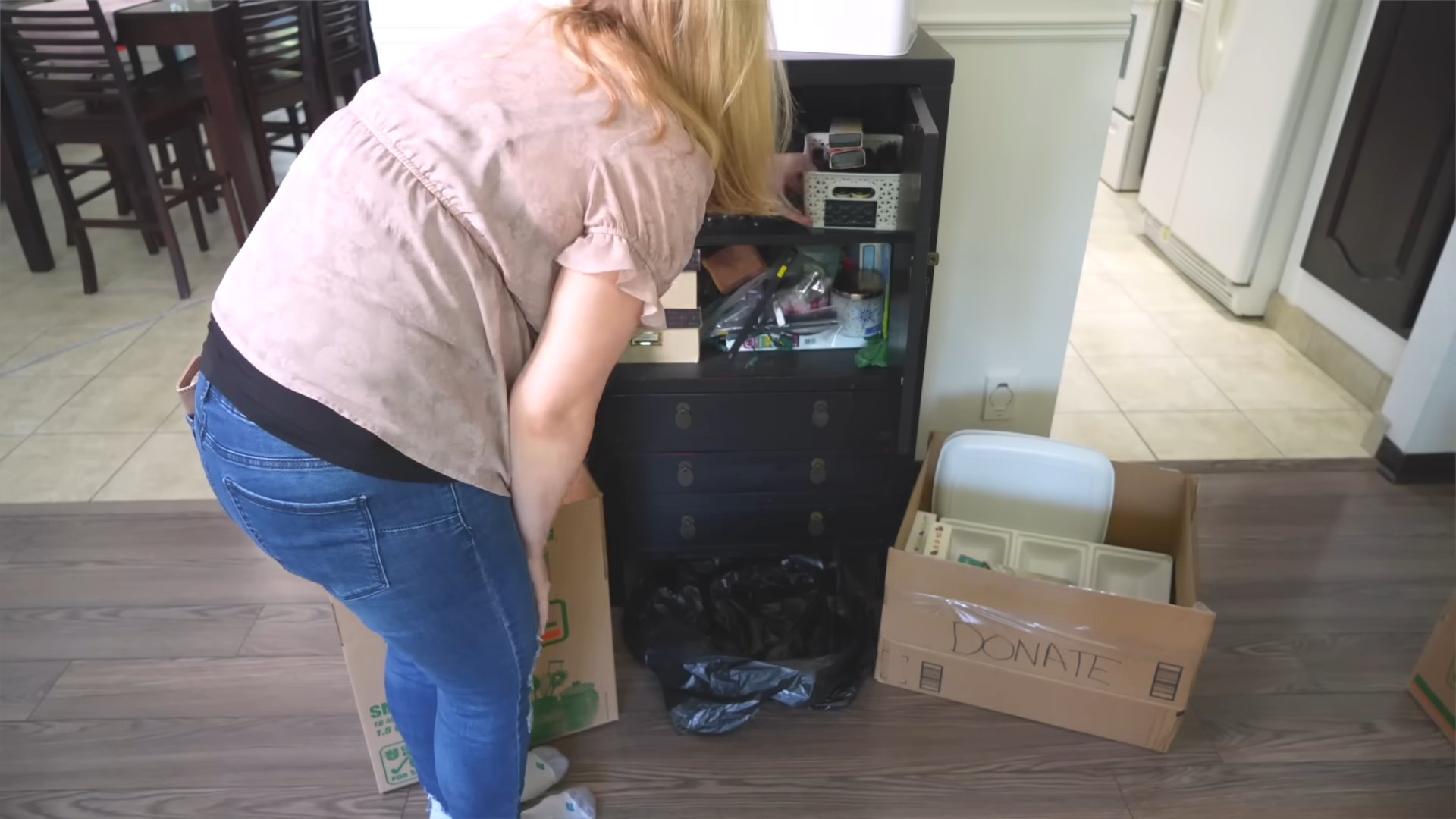Daily habits for a tidy home are the secret weapon against the never-ending battle with clutter! Let’s face it, who *doesn’t* dream of a perpetually pristine living space? Imagine walking into your home after a long day and being greeted by calm and order, instead of a mountain of laundry and a sink full of dishes. Sounds idyllic, right? Well, it’s more achievable than you think, and this article is your ultimate guide to unlocking that dream.
For centuries, cultures around the world have understood the connection between a clean home and a clear mind. From the ancient practice of Feng Shui, which emphasizes harmony and balance in living spaces, to the minimalist philosophies that prioritize simplicity and intentionality, the desire for an organized home is deeply ingrained in our human experience. But in today’s fast-paced world, maintaining that order can feel like an impossible task.
That’s where these simple, yet powerful, daily habits for a tidy home come in. We’re not talking about spending hours scrubbing and organizing; instead, we’ll focus on small, manageable actions that, when consistently practiced, will transform your living space and your life. I’m going to share my favorite DIY tricks and hacks that have helped me keep my home looking its best, even with a busy schedule. So, ditch the overwhelm and get ready to embrace a more organized and peaceful you!

Daily Habits for a Consistently Tidy Home: My Secrets Revealed!
Okay, let’s be honest, who *doesn’t* dream of a perpetually tidy home? I know I do! But the reality is, life gets in the way. Work, family, hobbies… it all adds up, and suddenly your dream home looks more like a disaster zone. But don’t despair! I’ve learned that the key isn’t some massive, weekend-long cleaning spree (though those are helpful sometimes!), but rather a collection of small, daily habits that keep the chaos at bay. These are the things I do *every day* (or try to, anyway!) to maintain a sense of order and calm in my home. And trust me, if I can do it, you can too!
The Foundation: Making Your Bed (Seriously!)
This might sound ridiculously simple, but it’s a game-changer. Making your bed is the absolute first thing you should do every morning. It sets the tone for the entire day and instantly makes your bedroom look more put-together.
1. Straighten the Sheets: Pull your top sheet up and smooth out any wrinkles.
2. Fluff the Pillows: Give your pillows a good fluff to restore their shape.
3. Arrange the Pillows: Place your pillows neatly at the head of the bed. I like to layer mine – two standard pillows in the back, followed by a couple of decorative pillows in front.
4. Pull Up the Comforter/Duvet: Smooth out your comforter or duvet and tuck it in (or leave it hanging, depending on your preference).
5. Add a Throw (Optional): A throw blanket can add a touch of style and coziness. Drape it artfully across the foot of the bed.
The Kitchen Quick Clean: After Every Meal
The kitchen is often the biggest culprit when it comes to clutter. Food prep, cooking, and eating can leave a trail of mess in their wake. That’s why a quick clean after every meal is crucial.
1. Load the Dishwasher (or Wash by Hand): Don’t let dishes pile up in the sink! Load them into the dishwasher immediately after eating. If you don’t have a dishwasher, wash them by hand right away.
2. Wipe Down Counters and Surfaces: Use a damp cloth or cleaning wipe to wipe down all countertops, stovetops, and other surfaces. Pay special attention to spills and splatters.
3. Sweep or Vacuum the Floor: Crumbs and spills are inevitable. A quick sweep or vacuum will keep your kitchen floor clean and tidy.
4. Take Out the Trash (as Needed): If your trash can is full, take it out immediately. This will prevent odors and keep your kitchen smelling fresh.
5. Wipe Down the Sink: Give your sink a quick scrub with soap and water to remove any food residue.
The 15-Minute Tidy: A Daily Power Session
Set a timer for 15 minutes and focus on tidying up one specific area of your home. This could be the living room, the entryway, a bathroom, or even just a cluttered corner. The key is to be focused and efficient.
1. Choose Your Area: Decide which area needs the most attention.
2. Gather Your Supplies: Grab a basket or bag to collect clutter, a cleaning cloth, and a spray cleaner.
3. Declutter: Quickly scan the area and remove anything that doesn’t belong. Put items back in their proper place or toss them into your clutter basket.
4. Wipe Down Surfaces: Use your cleaning cloth and spray cleaner to wipe down any dusty or dirty surfaces.
5. Straighten and Arrange: Straighten cushions, arrange books, and generally make the area look more presentable.
6. Empty the Clutter Basket: Once the timer goes off, empty your clutter basket by putting everything in its rightful place.
The Laundry Loop: Stay on Top of the Wash
Laundry can quickly become overwhelming if you let it pile up. The “laundry loop” is a system that helps you stay on top of the wash by doing a little bit every day.
1. One Load a Day: Aim to do one load of laundry every day. This will prevent mountains of dirty clothes from accumulating.
2. Sort as You Go: Keep a laundry basket with separate compartments for lights, darks, and delicates. This will save you time when it’s time to do a load.
3. Wash, Dry, Fold, and Put Away: Don’t let clean laundry sit in the basket! As soon as the dryer is finished, fold the clothes and put them away immediately.
4. Check for Stains: Before throwing clothes in the hamper, check for stains and treat them immediately. This will prevent them from setting in.
The Entryway Edit: Prevent Clutter at the Door
The entryway is the first impression of your home, so it’s important to keep it tidy. This is where shoes, coats, bags, and mail tend to accumulate.
1. Designated Drop Zone: Create a designated drop zone for shoes, coats, and bags. This could be a shoe rack, a coat rack, or a bench with storage.
2. Deal with Mail Immediately: Don’t let mail pile up on the counter. Sort through it immediately and discard any junk mail.
3. Put Away Items Right Away: As soon as you come in the door, put away your shoes, coat, and bag.
4. Sweep or Vacuum Regularly: The entryway is a high-traffic area, so sweep or vacuum it regularly to remove dirt and debris.
5. Clear the Clutter Daily: Take a few minutes each day to clear any clutter that has accumulated in the entryway.
The Bathroom Blitz: Keep it Sparkling
Bathrooms can quickly become messy with toiletries, towels, and hair products. A quick daily blitz will keep your bathroom sparkling.
1. Wipe Down Surfaces: Use a cleaning wipe to wipe down the sink, countertop, and toilet seat.
2. Hang Up Towels: Hang up wet towels to prevent them from mildewing.
3. Put Away Toiletries: Put away any toiletries that are out on the counter.
4. Clean the Mirror: Use a glass cleaner to clean the mirror and remove any streaks or smudges.
5. Empty the Trash: Empty the trash can if it’s full.
The Nightly Reset: Prepare for Tomorrow
Before you go to bed, take a few minutes to reset your home for the next day. This will make your mornings much smoother and less stressful.
1. Clear the Counters: Clear off any clutter from the kitchen counters and dining table.
2. Load the Dishwasher: Run the dishwasher overnight so you can unload it in the morning.
3. Lay Out Clothes: Lay out your clothes for the next day to save time in the morning.
4. Pack Your Bag: Pack your bag for work or school so you don’t have to rush in the morning.
5. Do a Quick Sweep: Do a quick sweep of the main living areas to pick up any stray items.
Bonus Tip: The One-Minute Rule
If a task takes less than one minute to complete, do it immediately. This could be putting away a dish, hanging up a coat, or throwing away a piece of trash. These small actions add up and prevent clutter from accumulating.
Staying Consistent: My Personal Challenges and How I Overcome Them
Okay, I’m not going to lie, sticking to these habits every single day is tough! Life happens, and sometimes I fall off the wagon. But here’s what I do to get back on track:
* Forgive Yourself: Don’t beat yourself up if you miss a day (or two, or three!). Just acknowledge it and start fresh the next day.
* Start Small: If you’re feeling overwhelmed, don’t try to do everything at once. Pick one or two habits to focus on and gradually add more as you get comfortable.
* Make it a Routine: The more you do these habits, the more they become ingrained in your routine. Eventually, they’ll become second nature.
* Reward Yourself: Celebrate your successes! Treat yourself to something nice when you’ve consistently followed your tidy home habits for a week or a month.
* Enlist Help: If you live with others, get them involved! Assign tasks and work together to keep your home tidy.
These daily habits have made a huge difference in my home and my life. I feel less stressed, more organized, and more relaxed in my own space. I hope they help you too! Remember, it’s not about perfection, it’s about progress. Just start small, be consistent, and enjoy the journey to a tidier, happier home!

Conclusion
So, there you have it! Transforming your home into a haven of tidiness doesn’t require a complete overhaul or a massive budget. By incorporating these simple, yet powerful, daily habits, you can dramatically reduce clutter and create a more peaceful and functional living space. The beauty of these strategies lies in their adaptability. They aren’t rigid rules, but rather flexible guidelines that can be tailored to fit your unique lifestyle and preferences.
Think of it this way: making your bed each morning, a seemingly small act, sets the tone for the entire day. It’s a visual cue that signals order and control, making you more likely to maintain that sense of tidiness throughout the day. Similarly, the “one in, one out” rule prevents the accumulation of unnecessary items, forcing you to be more mindful of your purchases and possessions.
Don’t be afraid to experiment with these habits and find what works best for you. Perhaps you prefer to tackle a specific area of your home each day, focusing on decluttering one drawer or shelf at a time. Or maybe you find that setting a timer for just 15 minutes of tidying each evening is enough to keep things under control. The key is to find a routine that is sustainable and enjoyable, rather than feeling like a chore.
Consider variations on these habits to suit your needs. For example, instead of immediately putting away laundry, create a designated “staging area” where you can sort and fold it before distributing it to its proper place. Or, if you struggle with keeping your countertops clear, invest in attractive storage containers to keep frequently used items organized and accessible.
Ultimately, the goal is to cultivate a mindset of tidiness and organization. By making these habits a part of your daily routine, you’ll not only create a more visually appealing home, but you’ll also experience a sense of calm and control that extends beyond your physical surroundings. A tidy home often leads to a tidy mind, reducing stress and improving overall well-being.
We strongly encourage you to try incorporating these **daily habits for a tidy home** into your life. Start small, be patient with yourself, and celebrate your progress along the way. We’re confident that you’ll be amazed at the positive impact these simple changes can have on your home and your overall quality of life.
And most importantly, we want to hear from you! Share your experiences, tips, and challenges in the comments below. What daily habits have you found most effective for keeping your home tidy? What obstacles have you encountered, and how have you overcome them? Your insights can help inspire and motivate others on their journey to a more organized and clutter-free life. Let’s create a community of support and share our collective wisdom on the art of maintaining a tidy home!
Frequently Asked Questions (FAQ)
Q: How long will it take to see results from implementing these daily habits?
A: The timeframe for seeing noticeable results can vary depending on the current state of your home and the consistency with which you implement these habits. However, many people report feeling a sense of improvement within just a few days of starting. You might notice that your countertops are clearer, your floors are less cluttered, and your overall living space feels more organized. The key is to be patient and persistent. Don’t expect to transform your home overnight. Focus on making small, incremental changes each day, and you’ll gradually see a significant difference over time. Remember, consistency is more important than perfection. Even if you miss a day or two, don’t get discouraged. Just pick up where you left off and keep moving forward.
Q: What if I have a busy schedule and don’t have much time for tidying?
A: One of the great things about these daily habits is that they can be adapted to fit even the busiest schedules. The key is to focus on small, manageable tasks that can be completed in just a few minutes each day. For example, making your bed takes less than a minute, and wiping down the kitchen counters after each meal can be done in just a few minutes as well. You can also break down larger tasks into smaller, more manageable chunks. For example, instead of trying to declutter your entire closet at once, focus on decluttering one shelf or drawer each day. Even just 15 minutes of tidying each day can make a big difference over time. Consider setting a timer and focusing on one specific task until the timer goes off. You might be surprised at how much you can accomplish in just a short amount of time.
Q: What if I live with other people who aren’t as tidy as I am?
A: Living with others who have different tidiness habits can be challenging, but it’s not impossible to maintain a tidy home. The key is to communicate openly and honestly with your housemates about your expectations and needs. Try to find common ground and work together to create a system that works for everyone. For example, you could agree to designate certain areas of the home as “shared spaces” that everyone is responsible for keeping tidy. You could also create a chore chart or schedule to ensure that everyone is contributing to the upkeep of the home. It’s important to be respectful of your housemates’ habits and preferences, but it’s also important to advocate for your own needs. If you’re struggling to find a solution that works for everyone, consider seeking the help of a mediator or therapist.
Q: How do I deal with sentimental items that I don’t want to get rid of, but that are cluttering up my home?
A: Dealing with sentimental items can be one of the most challenging aspects of decluttering. It’s natural to feel attached to items that hold special memories or significance. However, it’s important to remember that you don’t need to keep every single item in order to preserve those memories. One strategy is to create a “memory box” or album where you can store a few of your most cherished items. You can also take photos of items that you don’t want to keep, but that you want to remember. Another strategy is to ask yourself some tough questions about each item. Does it bring you joy? Does it serve a purpose? If the answer to both of those questions is no, then it might be time to let it go. Remember, you’re not getting rid of the memories associated with the item, you’re simply freeing up space in your home.
Q: What are some good resources for learning more about decluttering and organization?
A: There are many excellent resources available for learning more about decluttering and organization. You can find books, articles, websites, and videos on a wide range of topics, from decluttering your closet to organizing your entire home. Some popular resources include Marie Kondo’s “The Life-Changing Magic of Tidying Up,” Dana K. White’s “Decluttering at the Speed of Life,” and the blog “Uncluttered.” You can also find helpful tips and advice on social media platforms like Pinterest and Instagram. Consider joining online communities or forums where you can connect with other people who are also interested in decluttering and organization. These communities can provide support, motivation, and inspiration. Don’t be afraid to experiment with different methods and techniques until you find what works best for you.





Leave a Comment